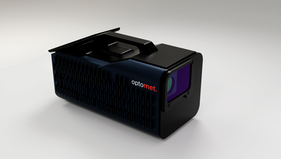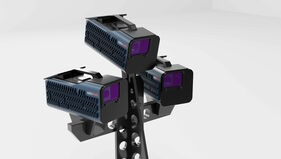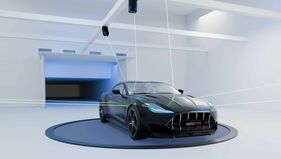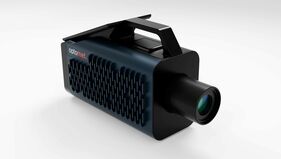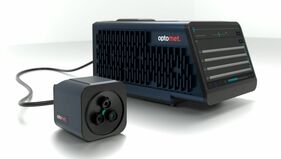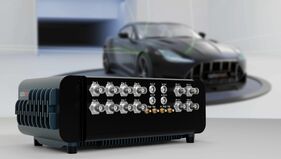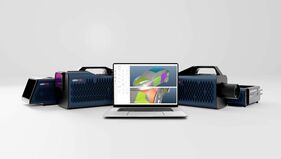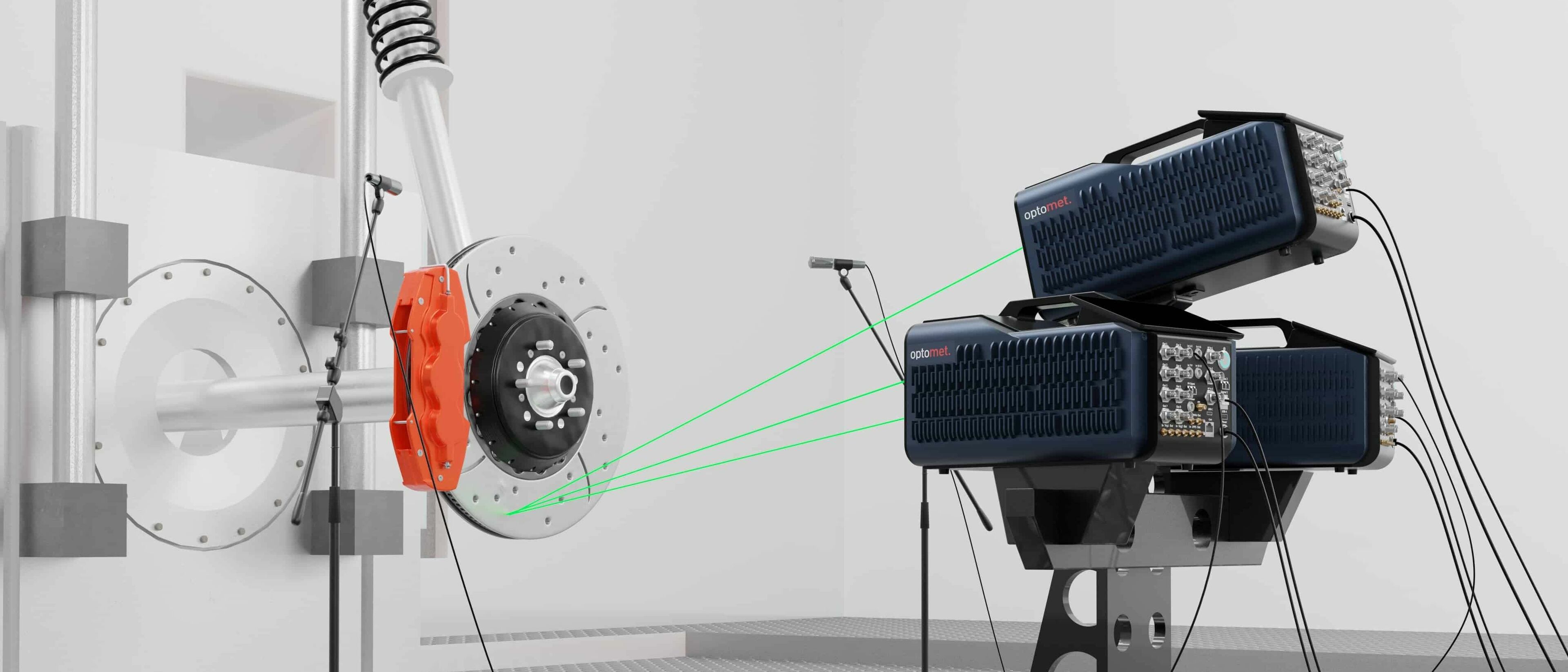
SMART 3D-Scanning
The future of 3D vibration analysis
Capture 3D vibration data of entire surfaces for precise analysis of any real-world test object.
The SMART 3D-Scanning captures precise vibration data in three dimensions with three synchronized vibrometers and offers extensive analysis functions. Equipped with over 30 reference and 24 signal generator channels, it combines advanced connectivity and intuitive operation in a compact design.
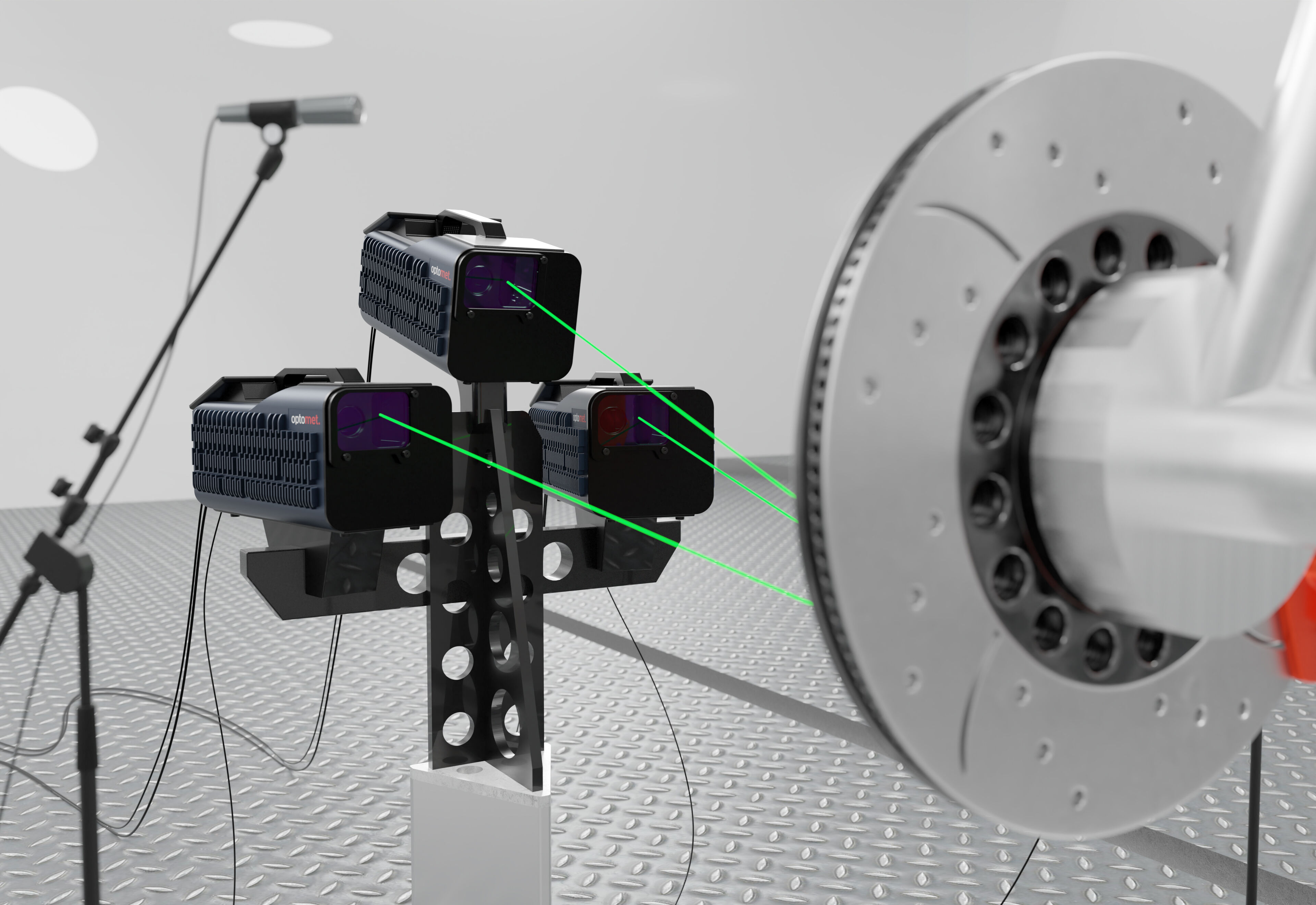
Intelligent 3D-calibration an intuitive usability
Enjoy hassle-free operation with automatic calibration and intuitive usability. Our system is designed to minimize setup time and reduce the potential for error, ensuring reliable and consistent measurements every time.
Ultra-precise and synchronized measurements
Achieve ultra-precise, synchronized measurements with our state-of-the-art technology. The vibrometer's advanced capabilities ensure highly accurate data, providing critical insights for a wide range of applications in engineering, materials science, and beyond.
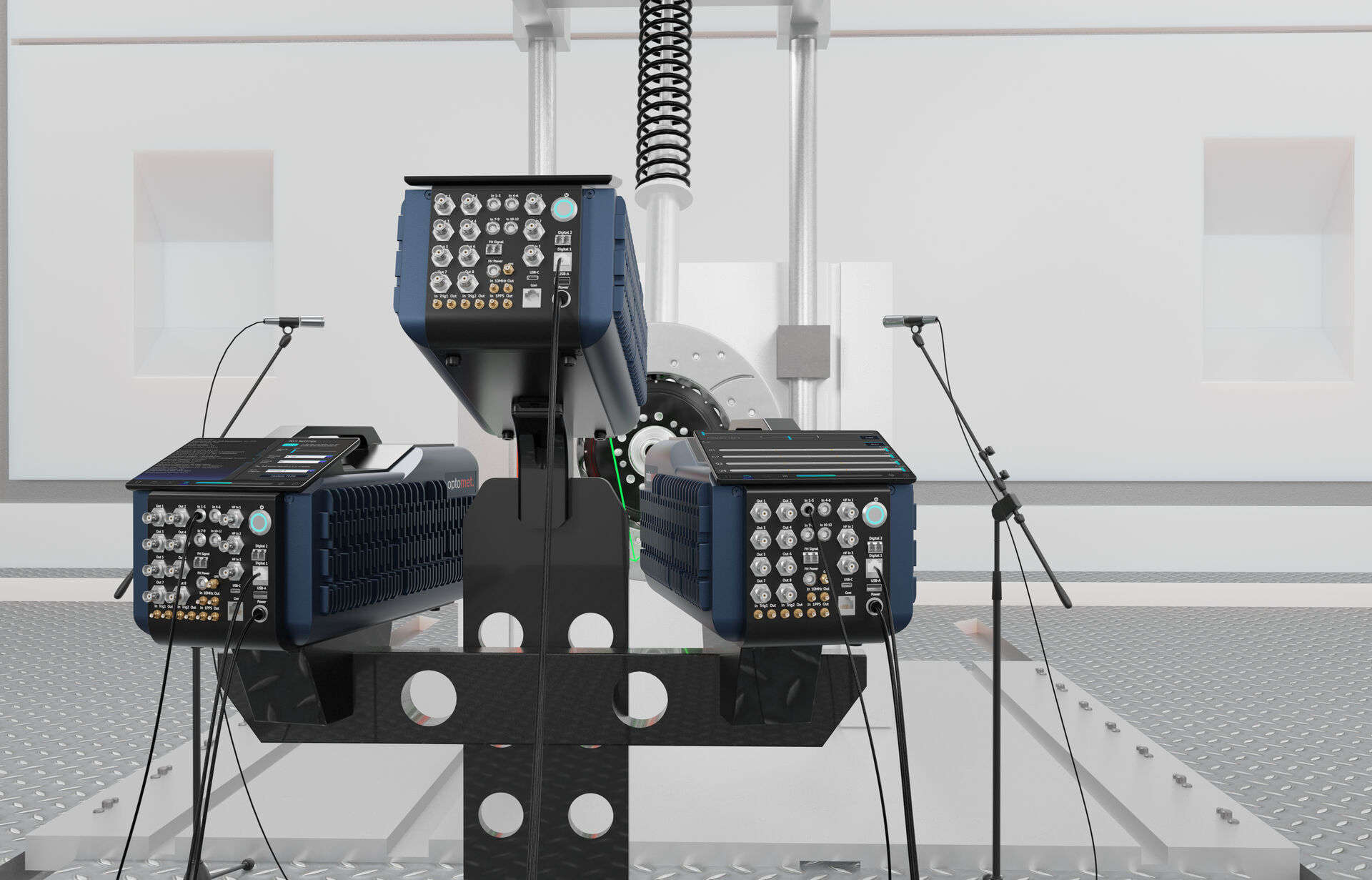

Flexible Measurement Setups
Our system offers unmatched versatility with options for a 3D-Scanning system or the use of three independent scanning vibrometers. This flexibility allows for tailored measurement setups to suit a wide range of applications, ensuring you get the most accurate data for your specific needs.
SMART 3D-Scanning: Precision in three-dimensional vibration measurement
Unlike conventional laser doppler vibrometers which only measure out-of-plane movements, the SMART 3D-Scanning captures highly accurate vibration data in all three directions of space without any retroactivity. In fact, the 3D-Scanning consists of three fully featured and precisely synchronized scanning vibrometers that work together as one.
This offers a unique value proposition to engineers, researchers and developers alike, enabling complete vibration analysis and visualization of complex structures. But with more than 30 reference channels and 24 signal generator channels, the 3D-Scanning also is the world’s first SMART 3D-Scanning vibrometer bundling all features that you could need in one SMART system.
With seamless connectivity using WiFi, Bluetooth, and USB, a versatile 7-inch touch display and an intuitive yet powerful all-in-one software solution the SMART 3D-Scanning is the ideal choice wherever accurate and complete data makes the difference.
POSSIBLE APPLICATIONS
Example: 3D-Scanning of a brake disc
SMART 3D Scan: Innovative 3D vibration measurement
Revolutionary measurement technology with SMART 3D Scan
Optomet's SMART 3D Scan is a leading system for full-field 3D vibration analysis. Developed for demanding applications, it offers intuitive operation, highly accurate measurements and seamless integration. With three fully equipped SMART Scan+ vibrometers, the system enables fully automated vibration measurements on objects of any size and geometry. The compact design and innovative SMART Lab software solution ensure a user-friendly and portable solution.
Key features of the SMART 3D Scan system
High-precision data processing: With FPGA-based signal processing and a digital signal path from DC to 50 MHz, even the smallest vibrations are reliably detected.
Versatile measurement options: The system measures velocity, acceleration and displacement with freely adjustable measuring ranges from 10 nm to 100 m.
Compact and portable: The all-in-one design and portable transport case make the system ideal for flexible use.
The SMART 3D Scan is versatile and can be used in a wide range of industries, including:
Automotive industry: Testing of vehicle components to improve NVH properties.
Aerospace: Detailed modal analysis and optimization of structural designs.
Materials research: Visualization and analysis of dynamic material properties.
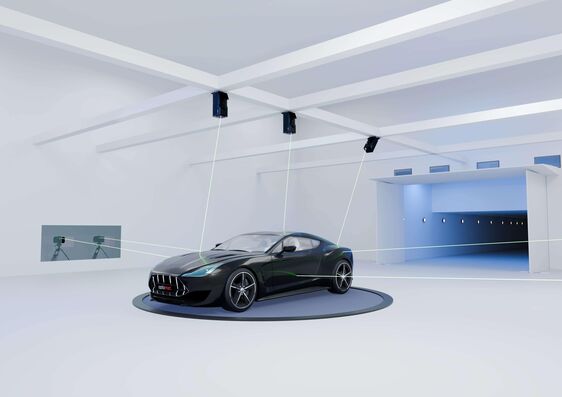
Intuitive SMART Lab software
The SMART Lab software provides a user-friendly interface for control, data acquisition and analysis. Highlights include:
CAD-based selection of measurement areas and creation of 3D measurement grids.
Real-time visualization of vibration patterns and frequency spectra.
Automatic or manual laser calibration of the system for maximum precision.
Advantages of 3D vibration analysis
The SMART 3D Scan simplifies complex measurement processes through:
3D measurement data: recording of vibrations in x, y and z direction.
Synchronous recording: up to 36 reference channels can be analyzed simultaneously.
High flexibility: measuring ranges and scan points can be precisely adapted to requirements.
Seamless connectivity: Ethernet and USB interfaces as well as Wi-Fi integration enable easy data transfer.
Expandability and future-proof
The SMART 3D Scan is designed to be future-proof and can also be used as a 360° vibration measurement system for full-body measurements. Thanks to its high modularity, the device can be expanded with additional SMART devices and enables upgrades to meet increasing requirements.
Why SMART 3D Scan is the perfect choice
The combination of advanced technology and ease of use makes the SMART 3D Scan the ideal instrument for anyone who needs accurate and reliable vibration data. Its rugged construction, combined with powerful software, ensures outstanding performance in any application. From research and development to industrial testing, this system delivers results that set the standard.
Specifications
| • 3 fully-featured scanning vibrometers, each with an 4K camera, multiple reference inputs, and signal generator functionality |
| • Truly compact 3D vibration analysis system which requires no additional data acqusition, signal generator or signal processing hardware. |
| • All required cables for 3D scanning measurements, user-replaceable and locally available |
| • Single broadband ethernet connection to a PC running our versatile scanning software, SMART Lab |
| • SMART Lab can be installed on any modern PC with Windows 10 or higher. Simply upgrade your PC if you require more power |
| • Each scanning vibrometer can be operated independently in 360° full-body scanning mode |
| • The 3D scanning system can later be extended to a multipoint laser-doppler vibrometry system by adding additional scanning vibrometers |
| • High-quality tripod set for simple setup of the 3D scanning system in a variety of different conditions |
| • Truly portable: the entire 3D scanning system can be packed into three compact transport cases for the vibrometers and three bags for the tripods |
| • Fully digital signal path from DC to 8 MHz - no limitations that depend on the measured signal frequencies |
| • Highly accurate synchronization for the best results under all circumstances |
| Measured quantities | Velocity, displacement, acceleration |
| Max. frequency bandwidth | DC to 50 MHz |
| Frequency range | Can be chosen individually using a freely configurable band-pass filter for velocity, displacement and acceleration signal |
| Max. velocity | 50 m/s |
| Measurement ranges | Measurement range limits can be freely adjusted between |
| • 1 mm/s and 50 m/s for velocity | |
| • 10 nm and 100 m for displacement | |
| • 10 m/s² and 100 Mio. m/s² for acceleration | |
| Signal processing | Digital (FPGA based) |
| Filter | Low-pass and high-pass filters are defined by the selected frequency range |
| Tracking filter: off / slow / fast | |
| User interface | 7” Full HD+ touchscreen with 1000 nits peak brightness |
| Operating temperature | 0 °C to 40 °C |
| Dimensions | Length × width × height (excluding handle): 365 × 194 × 196 mm |
| Weight | ~ 7.8 kg |
| Power supply | 100 - 240 V AC (50-60 Hz) or 12 V DC |
| Portability | Convenient all-in-one design for seamless portability and simple setup |
| Storage temperature | -10 °C to 65 °C |
| Relative humidity | Max. 80 %, non-condensing |
| Calibration interval | Every 24 months (recommended) |
| Scan angle | 50° x 40°, resolution below 0.001°, stability better than 0.001°/h |
| Max. scan points per second | 30 |
| Scan point density | Up to 512 x 512 scan points |
| Camera | • 4 K 2160p, 40 x hybrid zoom (1080p equivalent), 20 x optical zoom |
| • Horizontal viewing angle: 63.7° (wide end) to 3.2°, driverless installation | |
| Sample size | Min. < 1 mm², max. > 10 m² |
| Working distances | • Variable working distance from 250 mm to 100 m |
| • With Coaxial Unit: 111 mm to 1 m | |
| • With Close-Up Unit: below 6.5 mm to 54 mm | |
| Laser wavelength | Measurement laser: 1550 nm, Target laser: 510-530 nm |
| Laser safety class | • Measurement laser: output power: <10 mW, class 1 |
| • Target laser: output power: <1 mW, class 2 | |
| Lens | Long-Range, 100 mm focal length |
| Optics | Auto-, and manual focusing |
Inputs and Outputs
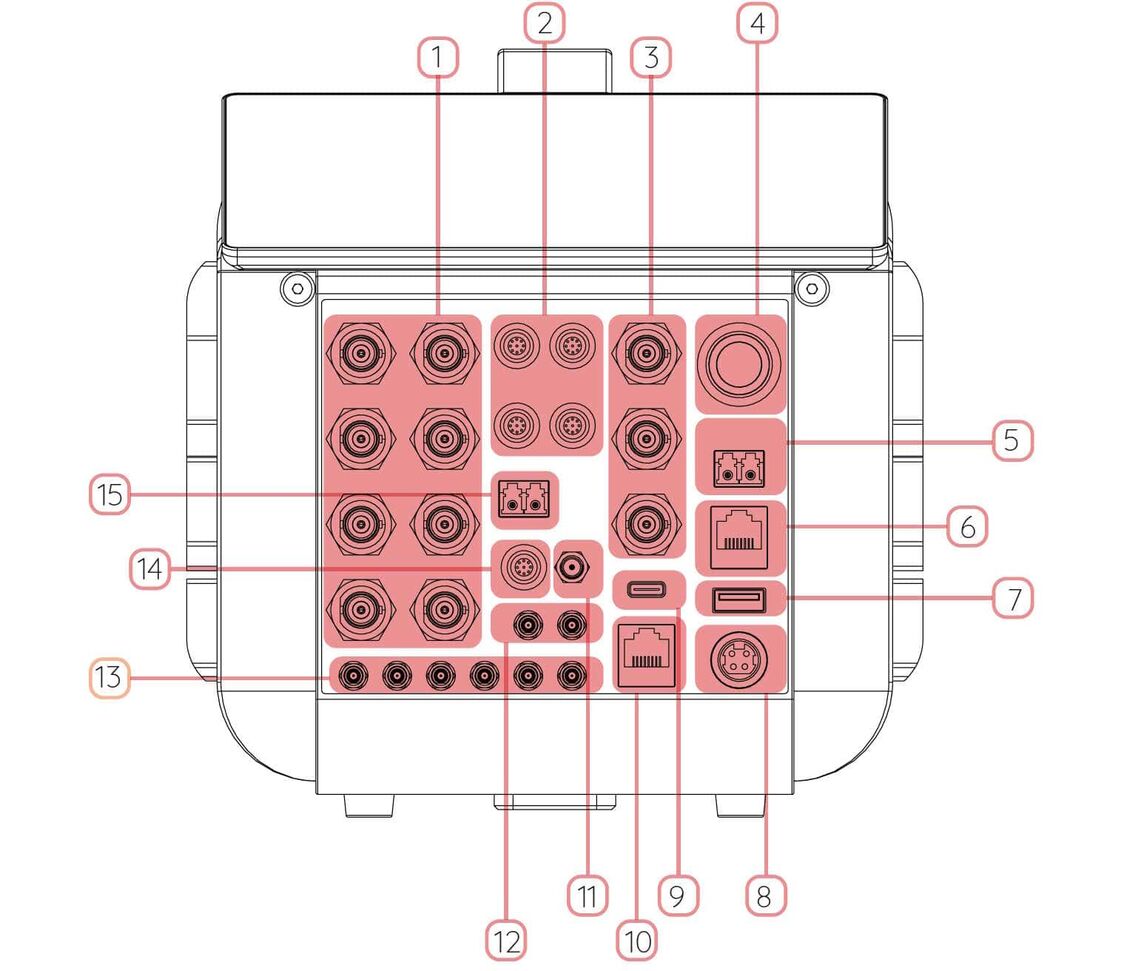
| 1 | Analog signal outputs (BNC) |
| 2 | LEMO signal inputs (12 channels) |
| 3 | BNC HF signal inputs (up to 50 MHz) |
| 4 | Power button |
| 5 | Optical communication port |
| 6 | Ethernet port: for device communication/data |
| 7 | USB port (Type-A) |
| 8 | Power input |
| 9 | USB port (Type-C) |
| 10 | Ethernet port: for device communication/data |
| 11 | GNSS antenna conncetor |
| 12 | 10 MHz SMB ports |
| 13 | Multi-purpose SMB ports |
| 14 | Power output |
| 15 | Optical fiber connector (LC-Duplex) |
Software SMART Lab
| Remote control of vibrometer settings, lasers and camera | • Connect and control multiple vibrometers at once for reference, multipoint and 3D vibration measurements |
| Measurement setup | • Automatic or manual calibration of laser movement with camera image |
| • Select measurement areas based on the loaded 3D models and automatically generate mesh points | |
| Data acquisition | • Convenient access to all your data in a single software - from vibrometers to multiple reference sensors |
| • Multi-channel arbitrary signal generator to generate predefined signals (sine, sine sweep, rectangle, random, etc.) or custom signals from imported .csv or .wav files | |
| • Real-time signal analysis and improvement based on speckle tracking and smart averaging | |
| Measurement analysis | • Calculation of various frequency functions: FRF, FFT, Auto-Spectrum, Cross-Spectrum, Coherence |
| • 3D-animation of mode shapes at user-defined frequencies based on FRF and FFT data | |
| • Entirely customizable view options including color maps, viewing angles, texture surfaces, etc. | |
| Data import and export | • Multithreaded export of ODS data, time data, geometry data, all frequency functions, and data of reference channels to Universal File Format (.uff), to Hierarchical Data Format (.hdf5) and to MATLAB® file format (.mat) |
| • Export animations of time data (wave-propagation) and selected mode-shapes as high resolution (up to 4K) video file |
| Geometry unit to measure the 3-dimensional geometry of your object and the absolute distance to the vibrometer | O |
| Time domain analysis and animation to visualize the propagation of vibrations | O |
| Modal analysis to gain insight in the dynamical properties of the device under test | O |
| Basic software maintenance: 2 years of included software updates | S |
| Extended software maintenance: 2 more years of software updates | O |
Configurable options
| Basis | Measure frequencies up to 250 kHz, covering the entire acoustic range and beyond | S |
| High frequency | Measure frequencies up to 5 MHz | O |
| Master | Measure frequencies up to 10 MHz | O |
| Ultra | Measure frequencies up to 25 MHz | O |
| Elite | Measure frequencies up to 50 MHz to the limit of what is technologically feasible | O |
| Frequency upgrade M | Upgrade the frequency limitation of any option by 500 kHz | O |
| Frequency upgrade L | Upgrade the frequency limitation of any option by 1 MHz | O |
| Frequency upgrade XL | Upgrade the frequency limitation of any option by 5 MHz | O |
| Basis | Continuously adjust the velocity measurement range between 10 mm/s and 15 m/s | S |
| High Speed | Measure velocities up to 25 m/s | O |
| Master | Measure velocities up to 50 m/s | O |
| Ultra | Measure velocities up to 50 m/s and get access to the high resolution upgrade with the smallest velocity measurement range of 1 mm/s | O |
| High resolution upgrade | Smallest velocity measurement range 1 mm/s | O |
| Velocity upgrade M | Increase the maximum velocity of any velocity option by 2.5 m/s | O |
| Velocity | Measure vibrational velocities | S |
| Displacement | Measure vibrational displacements with continuously adjustable ranges from 10 nm to 100 m | O |
| Acceleration | Measure vibrational accelerations with continuously adjustable ranges from 10 m/s² to 100 Mio. m/s² | O |
Accessories

Transport case (S)
• Stable and waterproof Peli case for safe storage and transport of vibrometer
• External dimensions (L x W x H): 62.5 x 49 x 35 cm

Protection window (O)
Protects the scanning unit against dust, wind, and acoustic excitation at high sound pressure levels

Close-up unit (O)
For measurements of small objects with stand-off distances in the range of millimeters

Transport bag (O)
Compact and light transport bag for outdoor measurements

Coaxial unit (O)
Aligns the optical axes of measurement laser and camera

Tripod with fluid head (O)
Precisely align your vibrometer with high-quality tripods by Manfrotto

Ring light (O)
For illumination of small test objects. Requires Close-up Unit.

Mirror set (O)
Enables contactless vibration measurements even where access is difficult. The mirror set contains 4 front surface mirrors.

IR-detector card (S)
Transforming the invisible infrared light into a spot of visible light

 SMART Scan+
SMART Scan+
 SMART 3D-Scan
SMART 3D-Scan
 SMART Full Body
SMART Full Body
 SMART Single+
SMART Single+
 SMART Multi-Fiber
SMART Multi-Fiber
 SMART 3D-Fiber
SMART 3D-Fiber
 SMART DAQ
SMART DAQ
 Software SMART Lab
Software SMART Lab
 Scanning Vibrometer
Scanning Vibrometer
 Vector-Series
Vector-Series
 Vector-Micro-Optics
Vector-Micro-Optics
 Nova-Series
Nova-Series
 Nova-Xtra
Nova-Xtra
 Fiber-Series
Fiber-Series
 Fiber-Multiplex
Fiber-Multiplex
 Fiber Micro Manipulator
Fiber Micro Manipulator
 OptoSCAN
OptoSCAN
 OptoGUI
OptoGUI
 Acoustics & Ultrasonics
Acoustics & Ultrasonics
 Aerospace and aviation
Aerospace and aviation
 Automotive
Automotive
 Biology & Medicine
Biology & Medicine
 Brake noise
Brake noise
 Civil Engineering
Civil Engineering
 Electronics & Household Devices
Electronics & Household Devices
 Materials Research
Materials Research
 Medical technology
Medical technology
 Tools & Machinery
Tools & Machinery
 Turbine
Turbine
 Wind tunnel testing
Wind tunnel testing

